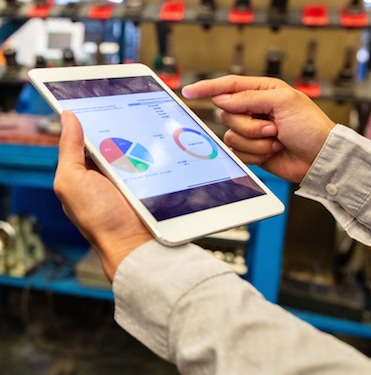
In my last blog post I wrote about a simple but important question – how do you know if you are having a good day? This can be a surprisingly difficult one to answer if you still rely on manual, paper-based, or Excel spreadsheets to view and manage manufacturing operations performance. These tools just can’t keep up anymore in today’s fast-paced and quickly evolving business environment. If this scenario sounds familiar, then here are five insights on how you can improve your situation with an MES. Each of these suggestions can be achieved as part of the investment now likely being implemented at your organization – or soon will be – to digitally transform how your manufacturing operations are managed.
1. Establish A Single Source of the Truth
Traditionally, manufacturing information is siloed. This can be true even in a company with a Manufacturing Execution System (MES). Quality processes might be managed by one system, incoming parts and supplies by another, and worker assignments by yet another. These silos create multiple sources of data – often incompatible. Create a single source of the truth with a data warehouse. Aggregate it from all sources, handle it consistently, and present it to users in a standardized form. That way, no matter who accesses the data or compiles a report, everyone will start from the same accurate base of information.
2. Gain Real-time Visibility
To know if you’re having a good day, you need up-to-the-minute information on how the factory is performing at any given moment. With an integrated MES and a well-designed data warehouse, it’s possible to see exactly what’s happening on the plant floor at any moment. If you have a large user base, you’ll need to be sure that user access does not slow down critical operations. The system should be tested carefully as it’s implemented, so any performance issues can be managed accordingly.
3. Easily Accessible Reporting Tools
Unless your reporting tools or MES software is easy to use, adoption won’t occur. It’s not just about giving visibility to employees to quickly see what’s happening. It’s demonstrating that there is a better way to prepare and distribute intelligence that can save time. This means that any software, whether it’s an MES or a Manufacturing Intelligence application, should be available on any device, easy to navigate, and with clear, graphical screens. Users must be able to see the KPIs or produce the reports they need to act quickly and decisively.
4. It’s More Than Just Charts and Gauges
While it’s important to have user-friendly dashboards and nice graphics, looks can be deceiving. What is crucial is how data is gathered, cleaned, and contextualized. Reporting apps are only as good as the data behind them. Accurate, standardized data can be used to reveal insights with data analytics, AI, and machine learning. These technologies are especially good at finding deep correlations in complex systems, which certainly applies to manufacturing. Given the value of the insights, they are usually worth the investment.
Those interested in reading more on this topic should read this article, Manufacturing Intelligence is More Than Just Charts and Gauges.
5. Something for Everyone
What is the value of all the manufacturing data in your enterprise? Whatever that figure is, I would argue it’s directly proportional to the number of people who can use it to answer their questions. Making data available to everyone requires an information system that not only knows what’s going on at this moment but knows who you are and what you need. Whether you are the CEO or a line worker, a well-designed Manufacturing Intelligence application lets you create standard profiles for different types of users, along with the data access and widgets they need for their various roles. This lets you leverage your manufacturing data across the enterprise.
Manufacturing data is one of the greatest untapped resources at many companies. Fortunately, the technologies and solutions I have shared with you all exist. And, with the Industry 4.0 and digital transformation projects now being implemented, there is no better time to improve the value of these investments. Start by focusing on what people need to know, and then take steps to ensure the right flow of data exists, from the equipment and technology to the people making decisions.
In the end, you will be rewarded with the ability to quickly respond to the question of “Are you having a good day?”





